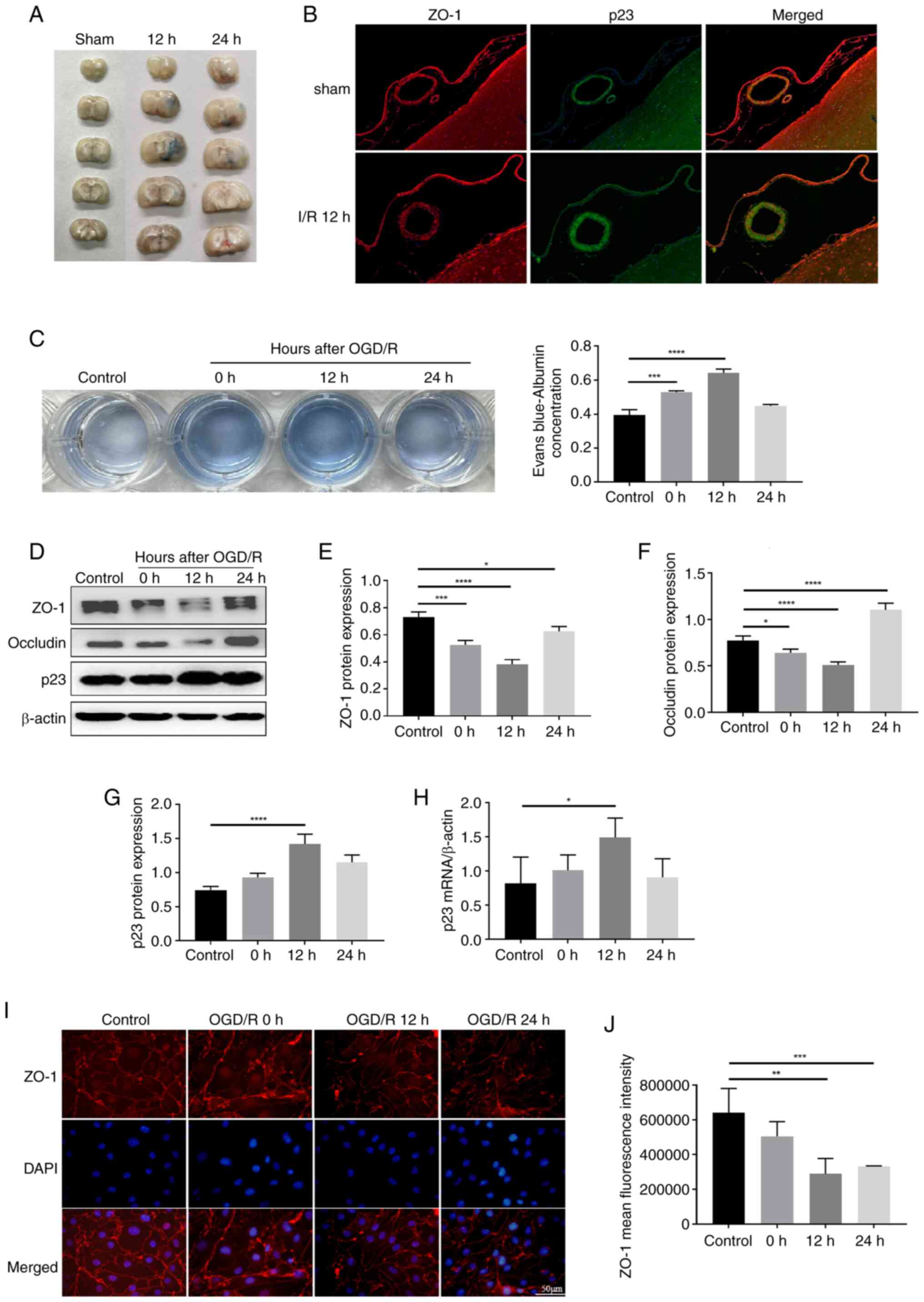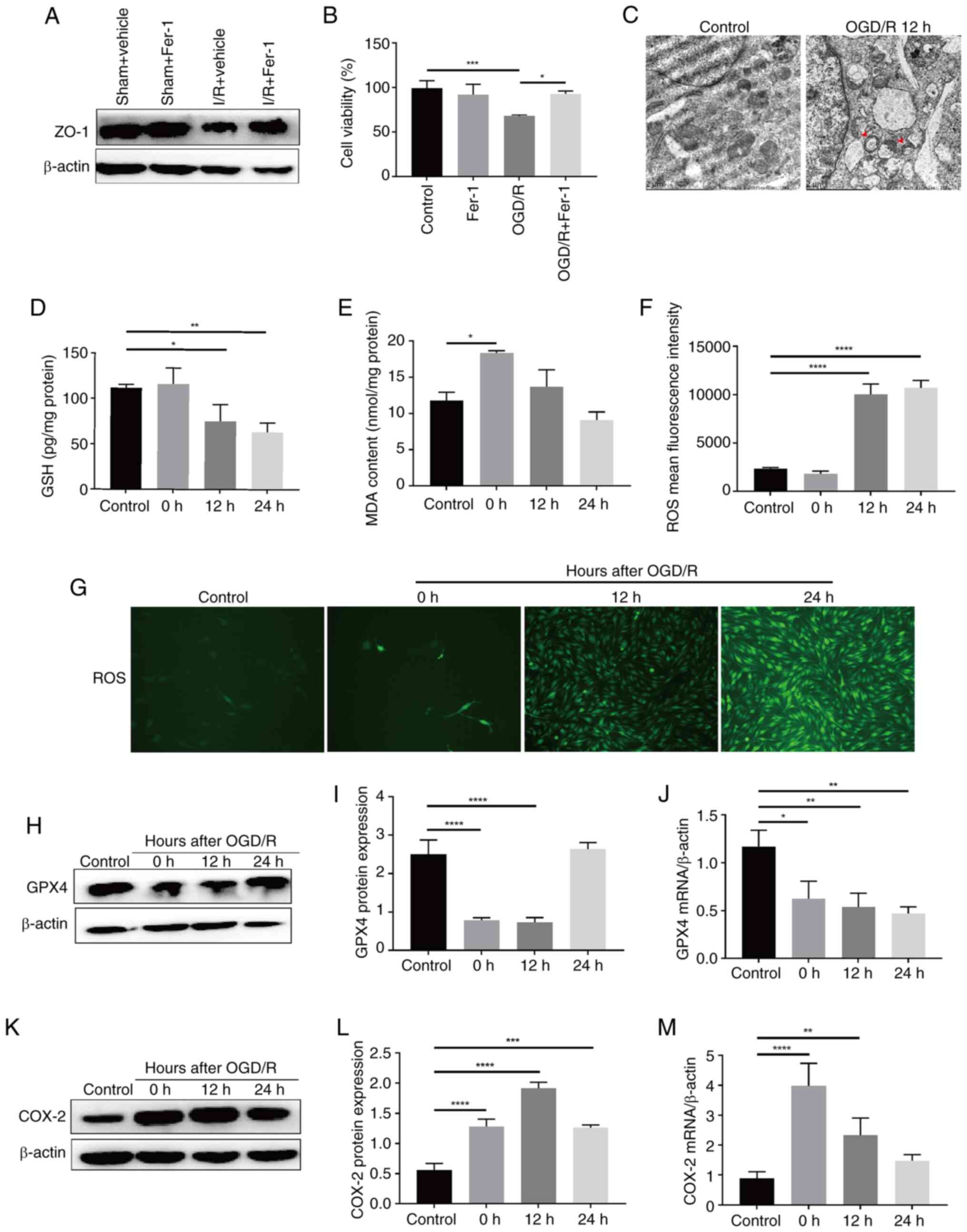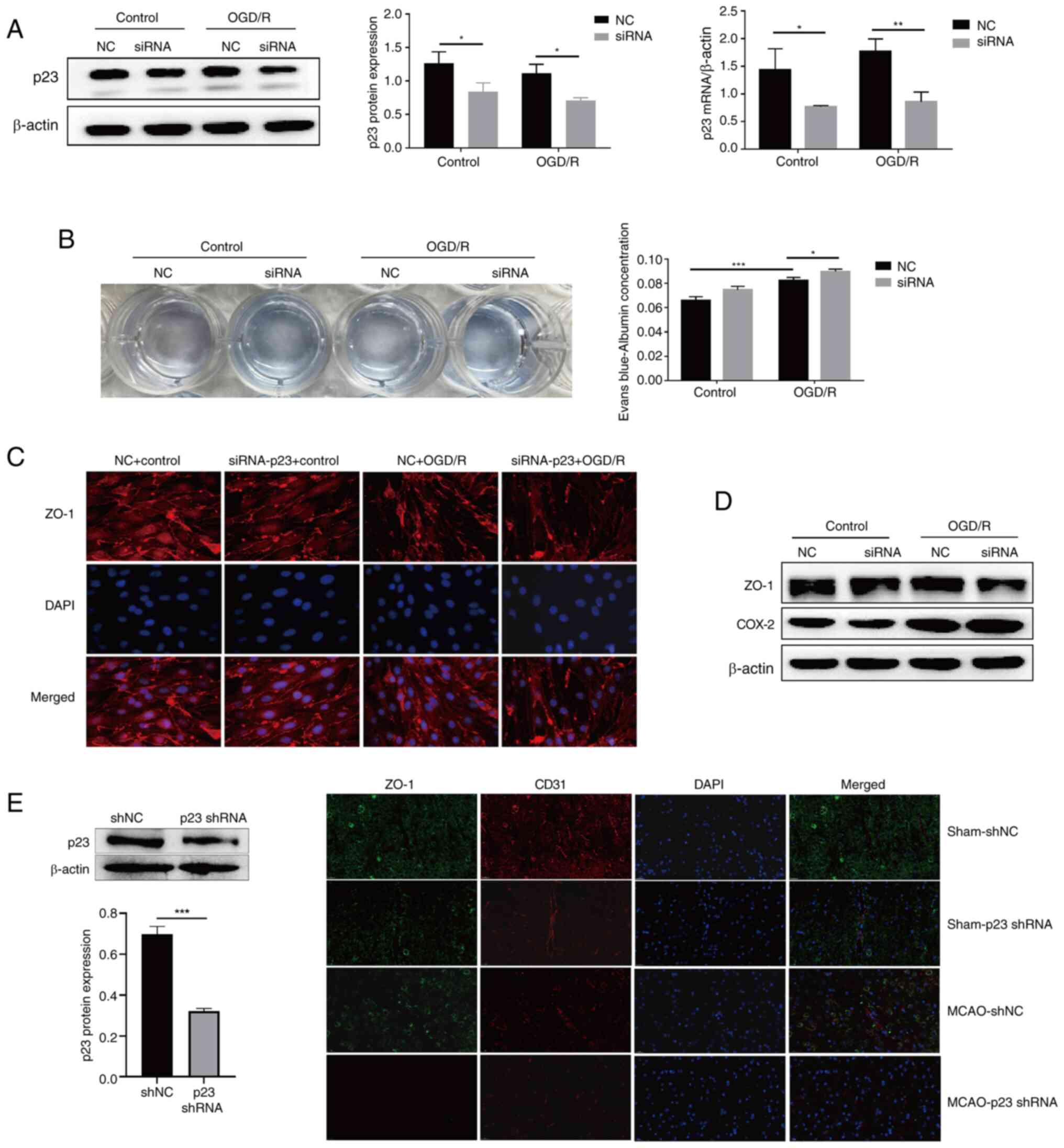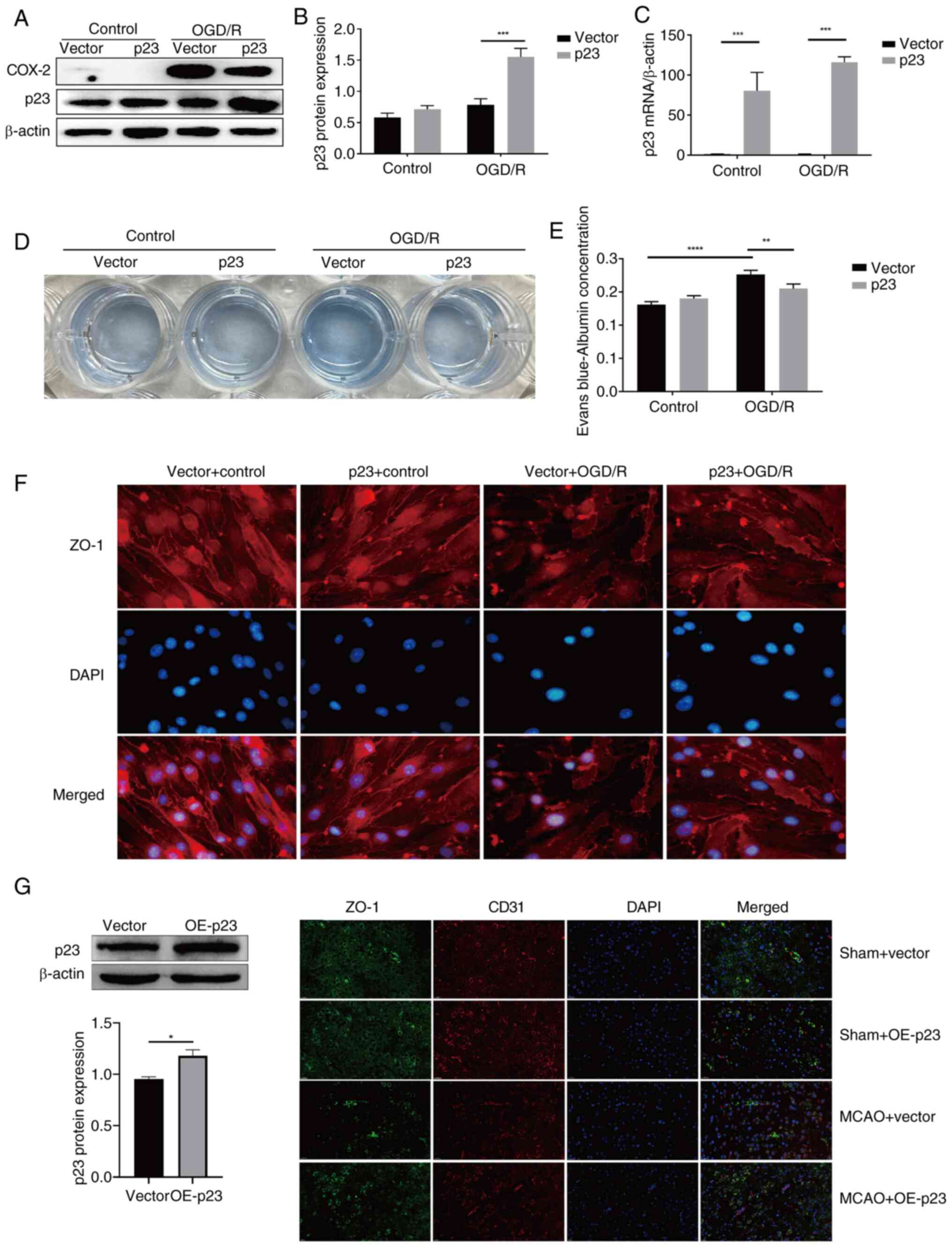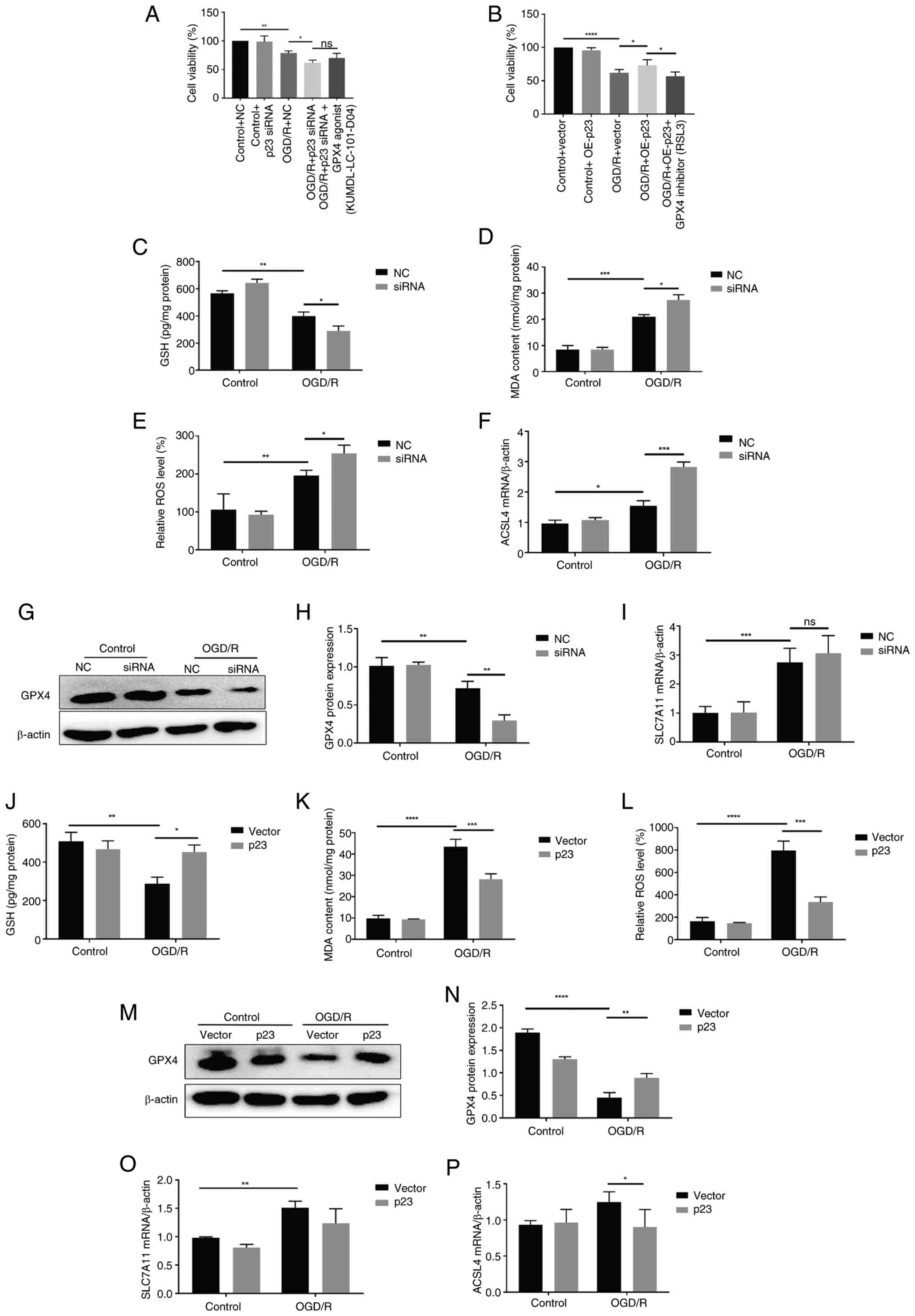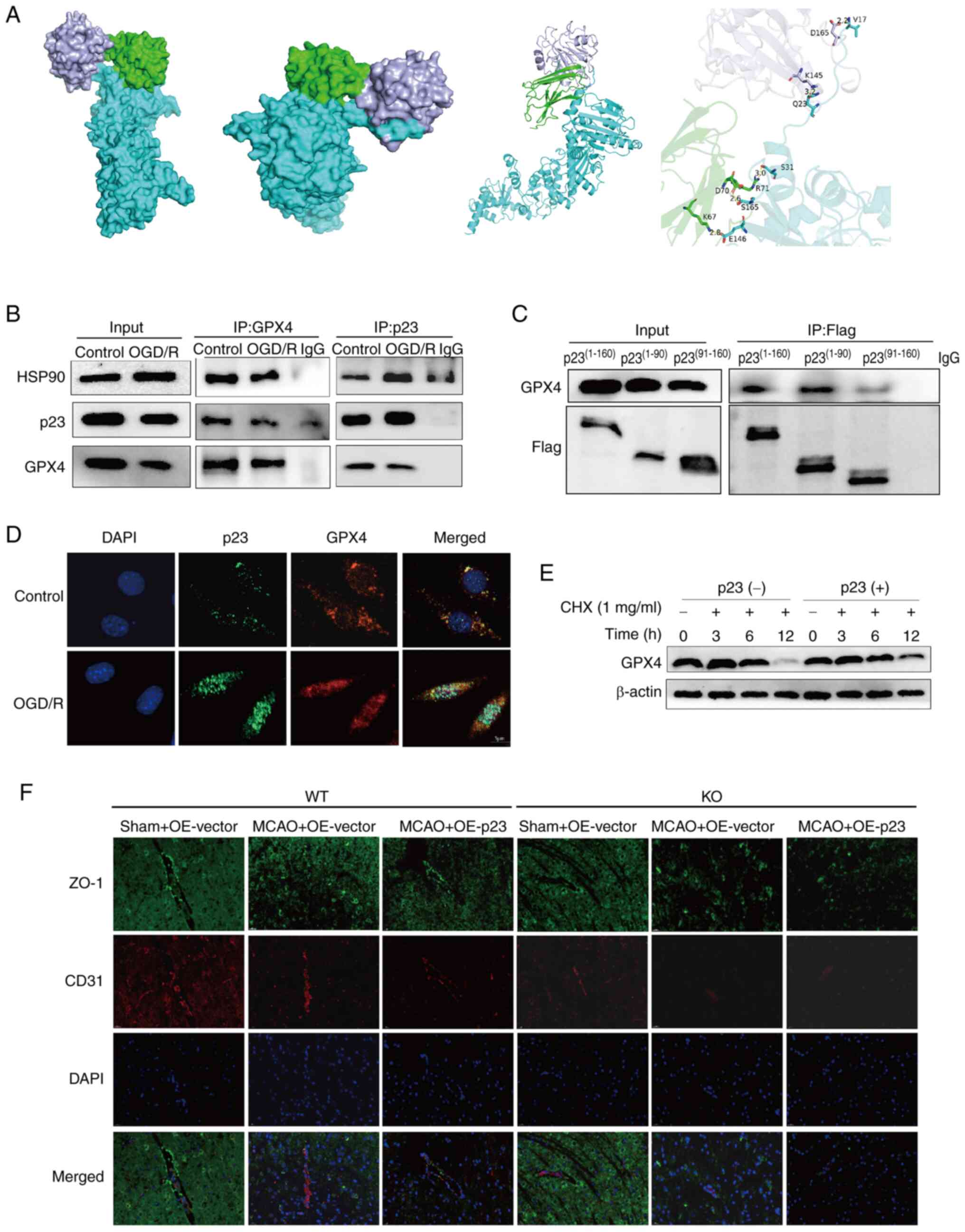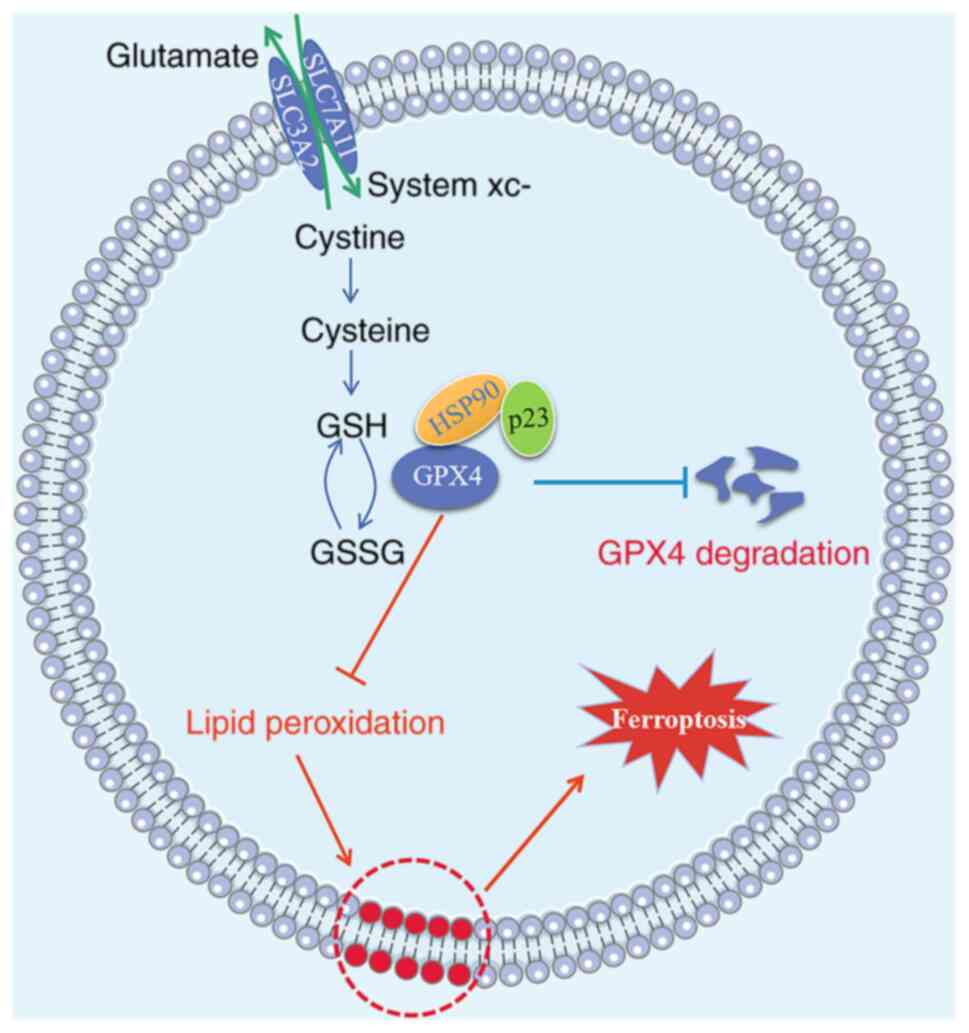|
1
|
Miller JB, Merck LH, Wira CR, Meurer WJ,
Schrock JW, Nomura JT, Siket MS, Madsen TE, Wright DW, Panagos PD
and Lewandowski C: The advanced reperfusion Era: Implications for
emergency systems of ischemic stroke care. Ann Emerg Med.
69:192–201. 2017. View Article : Google Scholar
|
|
2
|
Eltzschig HK and Eckle T: Ischemia and
reperfusion-from mechanism to translation. Nat Med. 17:1391–1401.
2011. View
Article : Google Scholar : PubMed/NCBI
|
|
3
|
Leigh R, Christensen S, Campbell BC, Marks
MP, Albers GW and Lansberg MG: Pretreatment blood-brain barrier
disruption and post-endovascular intracranial hemorrhage.
Neurology. 87:263–269. 2016. View Article : Google Scholar : PubMed/NCBI
|
|
4
|
Jiang X, Andjelkovic AV, Zhu L, Yang T,
Bennett MVL, Chen J, Keep RF and Shi Y: Blood-brain barrier
dysfunction and recovery after ischemic stroke. Prog Neurobiol.
163-164:144–171. 2018. View Article : Google Scholar :
|
|
5
|
Leigh R, Jen SS, Hillis AE, Krakauer JW
and Barker PB: Pretreatment blood-brain barrier damage and
post-treatment intracranial hemorrhage in patients receiving
intravenous tissue-type plasminogen activator. Stroke.
45:2030–2035. 2014. View Article : Google Scholar : PubMed/NCBI
|
|
6
|
Desilles JP, Rouchaud A, Labreuche J,
Meseguer E, Laissy JP, Serfaty JM, Lapergue B, Klein IF, Guidoux C,
Cabrejo L, et al: Blood-brain barrier disruption is associated with
increased mortality after endovascular therapy. Neurology.
80:844–851. 2013. View Article : Google Scholar : PubMed/NCBI
|
|
7
|
Villringer K, Sanz Cuesta BE, Ostwaldt AC,
Grittner U, Brunecker P, Khalil AA, Schindler K, Eisenblätter O,
Audebert H and Fiebach JB: DCE-MRI blood-brain barrier assessment
in acute ischemic stroke. Neurology. 88:433–440. 2017. View Article : Google Scholar
|
|
8
|
Ji B, Zhou F, Han L, Yang J, Fan H, Li S,
Li J, Zhang X, Wang X, Chen X and Xu Y: Sodium Tanshinone IIA
sulfonate enhances effectiveness Rt-PA treatment in acute ischemic
stroke patients associated with ameliorating blood-brain barrier
damage. Transl Stroke Res. 8:334–340. 2017. View Article : Google Scholar : PubMed/NCBI
|
|
9
|
Dixon SJ, Lemberg KM, Lamprecht MR, Skouta
R, Zaitsev EM, Gleason CE, Patel DN, Bauer AJ, Cantley AM, Yang WS,
et al: Ferroptosis: An iron-dependent form of nonapoptotic cell
death. Cell. 149:1060–1072. 2012. View Article : Google Scholar : PubMed/NCBI
|
|
10
|
Zhao Y, Liu Y, Xu Y, Li K, Zhou L, Qiao H,
Xu Q and Zhao J: The role of ferroptosis in blood-brain barrier
injury. Cell Mol Neurobiol. 43:223–236. 2022. View Article : Google Scholar : PubMed/NCBI
|
|
11
|
Tuo QZ, Lei P, Jackman KA, Li XL, Xiong H,
Li XL, Liuyang ZY, Roisman L, Zhang ST, Ayton S, et al:
Tau-mediated iron export prevents ferroptotic damage after ischemic
stroke. Mol Psychiatry. 22:1520–1530. 2017. View Article : Google Scholar : PubMed/NCBI
|
|
12
|
Yan BC, Cao J, Liu J, Gu Y, Xu Z, Li D and
Gao L: Dietary Fe3O4 Nanozymes prevent the injury of neurons and
blood-brain barrier integrity from cerebral ischemic stroke. ACS
Biomater Sci Eng. 7:299–310. 2021. View Article : Google Scholar
|
|
13
|
Xu Y, Li K, Zhao Y, Zhou L, He N, Qiao H,
Xu Q, Zhang H, Liu Y and Zhao J: Inhibition of
15-hydroxyprostaglandin dehydrogenase protects neurons from
ferroptosis in ischemic stroke. MedComm. 5:e4522024. View Article : Google Scholar : PubMed/NCBI
|
|
14
|
Liu H, Hua Y, Keep RF and Xi G: Brain
ceruloplasmin expression after experimental intracerebral
hemorrhage and protection against Iron-induced brain injury. Transl
Stroke Res. 10:112–119. 2019. View Article : Google Scholar :
|
|
15
|
Tanioka T, Nakatani Y, Semmyo N, Murakami
M and Kudo I: Molecular identification of cytosolic prostaglandin
E2 synthase that is functionally coupled with cyclooxygenase-1 in
immediate prostaglandin E2 biosynthesis. J Biol Chem.
275:32775–32782. 2000. View Article : Google Scholar : PubMed/NCBI
|
|
16
|
Exner KS and Ivanova A: A
doxorubicin-peptide-gold nanoparticle conjugate as a functionalized
drug delivery system: Exploring the limits. Phys Chem Chem Phys.
24:14985–14992. 2022. View Article : Google Scholar : PubMed/NCBI
|
|
17
|
Martinez-Yamout MA, Venkitakrishnan RP,
Preece NE, Kroon G, Wright PE and Dyson HJ: Localization of sites
of interaction between p23 and Hsp90 in solution. J Biol Chem.
281:14457–14464. 2006. View Article : Google Scholar : PubMed/NCBI
|
|
18
|
Echtenkamp FJ, Zelin E, Oxelmark E, Woo
JI, Andrews BJ, Garabedian M and Freeman BC: Global functional map
of the p23 molecular chaperone reveals an extensive cellular
network. Mol Cell. 43:229–241. 2011. View Article : Google Scholar : PubMed/NCBI
|
|
19
|
Grad I, McKee TA, Ludwig SM, Hoyle GW,
Ruiz P, Wurst W, Floss T, Miller CA III and Picard D: The Hsp90
cochaperone p23 is essential for perinatal survival. Mol Cell Biol.
26:8976–8983. 2006. View Article : Google Scholar : PubMed/NCBI
|
|
20
|
Lovgren AK, Kovarova M and Koller BH:
cPGES/p23 is required for glucocorticoid receptor function and
embryonic growth but not prostaglandin E2 synthesis. Mol Cell Biol.
27:4416–4430. 2007. View Article : Google Scholar : PubMed/NCBI
|
|
21
|
Patwardhan CA, Fauq A, Peterson LB, Miller
C, Blagg BS and Chadli A: Gedunin inactivates the co-chaperone p23
protein causing cancer cell death by apoptosis. J Biol Chem.
288:7313–7325. 2013. View Article : Google Scholar : PubMed/NCBI
|
|
22
|
Livak KJ and Schmittgen TD: Analysis of
relative gene expression data using real-time quantitative PCR and
the 2(-Delta Delta C(T)) method. Methods. 25:402–408. 2001.
View Article : Google Scholar
|
|
23
|
Liu WY, Wang ZB, Zhang LC, Wei X and Li L:
Tight junction in blood-brain barrier: An overview of structure,
regulation, and regulator substances. CNS Neurosci Ther.
18:609–615. 2012. View Article : Google Scholar : PubMed/NCBI
|
|
24
|
Liu H, Zhang TA, Zhang WY, Huang SR, Hu Y
and Sun J: Rhein attenuates cerebral ischemia-reperfusion injury
via inhibition of ferroptosis through NRF2/SLC7A11/GPX4 pathway.
Exp Neurol. 369:1145412023. View Article : Google Scholar : PubMed/NCBI
|
|
25
|
Xiao P, Huang H, Zhao H, Liu R, Sun Z, Liu
Y, Chen N and Zhang Z: Edaravone dexborneol protects against
cerebral ischemia/reperfusion-induced blood-brain barrier damage by
inhibiting ferroptosis via activation of nrf-2/HO-1/GPX4 signaling.
Free Radic Biol Med. 217:116–125. 2024. View Article : Google Scholar : PubMed/NCBI
|
|
26
|
Yu Z, Peng Y, Gao J, Zhou M, Shi L, Zhao
F, Wang C, Tian X, Feng L, Huo X, et al: The p23 co-chaperone is a
succinate-activated COX-2 transcription factor in lung
adenocarcinoma tumorigenesis. Sci Adv. 9:eade03872023. View Article : Google Scholar : PubMed/NCBI
|
|
27
|
Neuwelt EA, Bauer B, Fahlke C, Fricker G,
Iadecola C, Janigro D, Leybaert L, Molnár Z, O'Donnell ME,
Povlishock JT, et al: Engaging neuroscience to advance
translational research in brain barrier biology. Nat Rev Neurosci.
12:169–182. 2011. View Article : Google Scholar : PubMed/NCBI
|
|
28
|
Hawkins BT and Davis TP: The blood-brain
barrier/neurovascular unit in health and disease. Pharmacol Rev.
57:173–185. 2005. View Article : Google Scholar : PubMed/NCBI
|
|
29
|
Zlokovic BV: The blood-brain barrier in
health and chronic neurodegenerative disorders. Neuron. 57:178–201.
2008. View Article : Google Scholar : PubMed/NCBI
|
|
30
|
Rand D, Ravid O, Atrakchi D, Israelov H,
Bresler Y, Shemesh C, Omesi L, Liraz-Zaltsman S, Gosselet F,
Maskrey TS, et al: Endothelial iron homeostasis regulates
Blood-brain barrier integrity via the HIF2α-Ve-cadherin pathway.
Pharmaceutics. 13:3112021. View Article : Google Scholar
|
|
31
|
Xu Y, Liu Y, Li K, Miao S, Lv C, Wang C
and Zhao J: Regulation of PGE2 pathway during cerebral ischemia
reperfusion injury in rat. Cell Mol Neurobiol. 41:1483–1496. 2021.
View Article : Google Scholar
|
|
32
|
Chen B, Chen Z, Liu M, Gao X, Cheng Y, Wei
Y, Wu Z, Cui D and Shang H: Inhibition of neuronal ferroptosis in
the acute phase of intracerebral hemorrhage shows long-term
cerebroprotective effects. Brain Res Bull. 153:122–132. 2019.
View Article : Google Scholar : PubMed/NCBI
|
|
33
|
Xu Y, Liu Y, Li K, Yuan D, Yang S, Zhou L,
Zhao Y, Miao S, Lv C and Zhao J: COX-2/PGE2 pathway inhibits the
ferroptosis induced by cerebral ischemia reperfusion. Mol
Neurobiol. 59:1619–1631. 2022. View Article : Google Scholar : PubMed/NCBI
|
|
34
|
Zou Y, Li H, Graham ET, Deik AA, Eaton JK,
Wang W, Sandoval-Gomez G, Clish CB, Doench JG and Schreiber SL:
Cytochrome P450 oxidoreductase contributes to phospholipid
peroxidation in ferroptosis. Nat Chem Biol. 16:302–309. 2020.
View Article : Google Scholar : PubMed/NCBI
|
|
35
|
Yang WS, Kim KJ, Gaschler MM, Patel M,
Shchepinov MS and Stockwell BR: Peroxidation of polyunsaturated
fatty acids by lipoxygenases drives ferroptosis. Proc Natl Acad Sci
USA. 113:E4966–E4975. 2016. View Article : Google Scholar : PubMed/NCBI
|
|
36
|
Friedmann Angeli JP and Conrad M: Selenium
and GPX4, a vital symbiosis. Free Radic Biol Med. 127:153–159.
2018. View Article : Google Scholar : PubMed/NCBI
|
|
37
|
Daneri-Becerra C, Valeiras B, Gallo LI,
Lagadari M and Galigniana MD: Cyclophilin A is a mitochondrial
factor that forms complexes with p23-correlative evidence for an
anti-apoptotic action. J Cell Sci. 134:2021. View Article : Google Scholar
|
|
38
|
Freeman BC, Felts SJ, Toft DO and Yamamoto
KR: The p23 molecular chaperones act at a late step in
intracellular receptor action to differentially affect ligand
efficacies. Genes Dev. 14:422–434. 2000. View Article : Google Scholar : PubMed/NCBI
|



